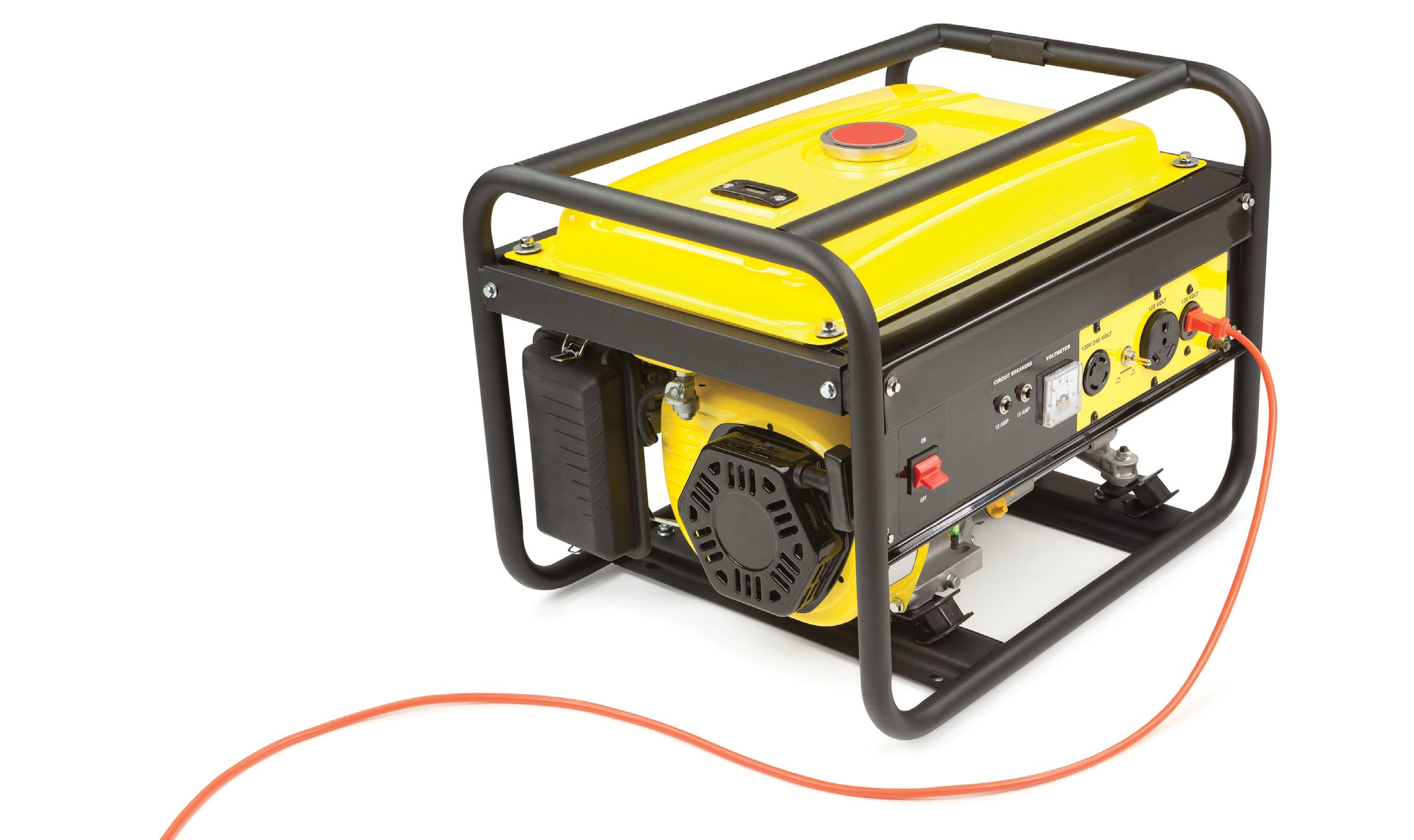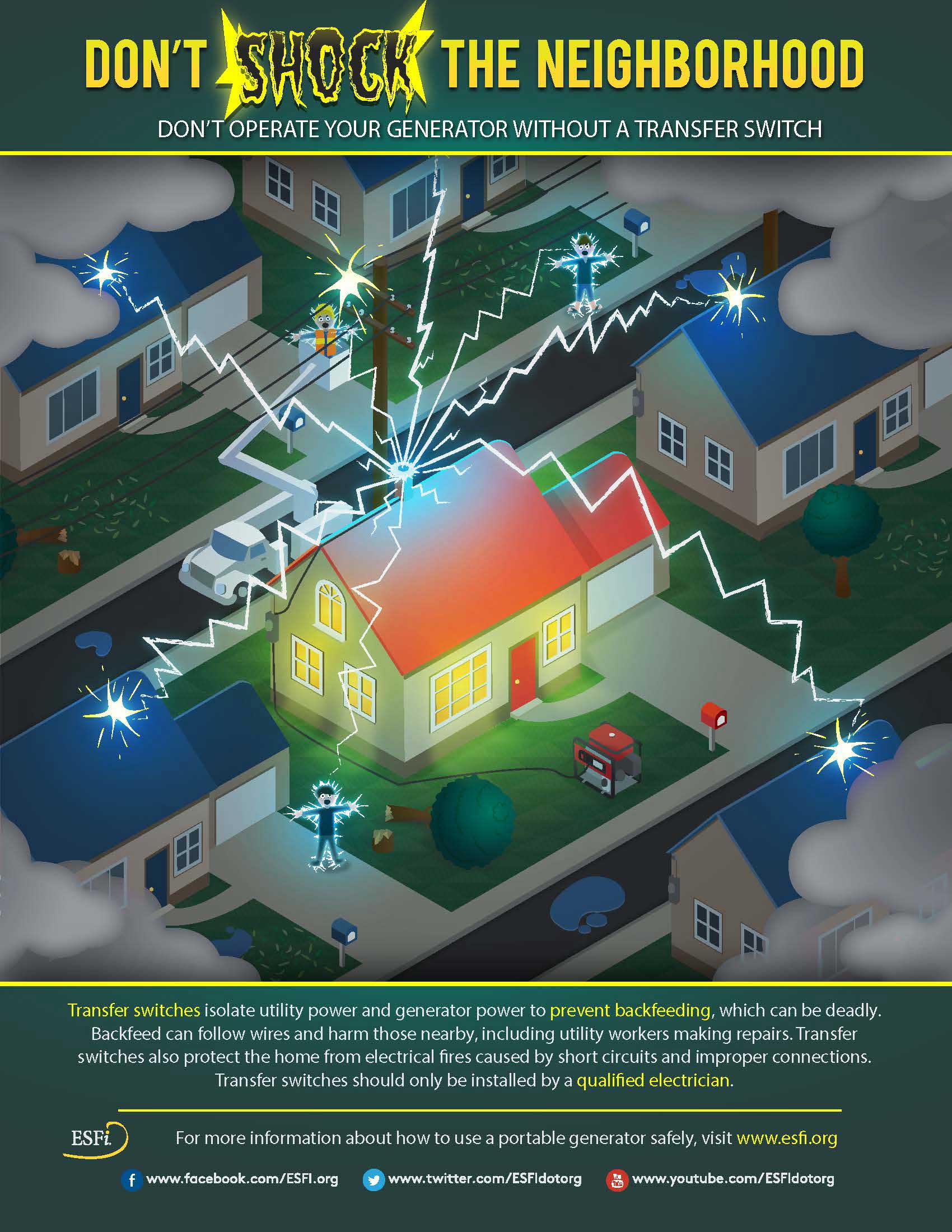EVEN A SMALL GENERATOR CAN KILL OR INJURE A PERSON REPAIRING SERVICE LINES WHEN THE ELECTRICITY YOU GENERATE BACK FEEDS THROUGH YOUR SERVICE ENTRANCE PANEL TO THE OUTSIDE UTILITY LINES.
If Farmers' Electric Coopreative line crews are restoring power to your home while your generator is connected to the incoming utility service you could start a fire or seriously injure or kill someone.

Portable generators require attention and proper use.
Portable electric generators are ideally suited to supply electricity for your refrigerator/freezer and small appliances during an extended power outage, such as from a severe storm.
They are also essential for maintaining power to critical life support equipment. But if they're used improperly they can kill you and the people restoring power. They can also damage the appliances you connect.
Take care when using your generator.
Know your generator! Read all the information on installation, safety, and maintenance, and follow the instructions regarding maintenance and testing.
The easiest safe way to temporarily connect a portable generator to a refrigerator or other small appliance is to simply run an extension cord of adequate size between the generator and the appliance. Above all, do not try to use a "cheater" or modified extension cord to plug a generator directly into a wall receptacle.
To directly connect a generator to your main electrical supply so that it can power the whole house requires installing a double-pole, double-throw transfer switch. A qualified, licensed electrician can do the job to National Electrical Code standards. Installing the connection and a double-throw transfer switch can cost $600 to $1,000.
Use caution when fueling your generator.
Never try to refuel the unit while it is operating. Avoid spilling gasoline or other fuels on hot components.
Location is important.
Provide adequate ventilation and air cooling for the generator to prevent overheating and the accumulation of toxic exhaust fumes. Do not install your generator in a basement, attached garage, or any closed area. Exhaust gases contain carbon monoxide, which is an odorless, invisible, poisonous gas.

